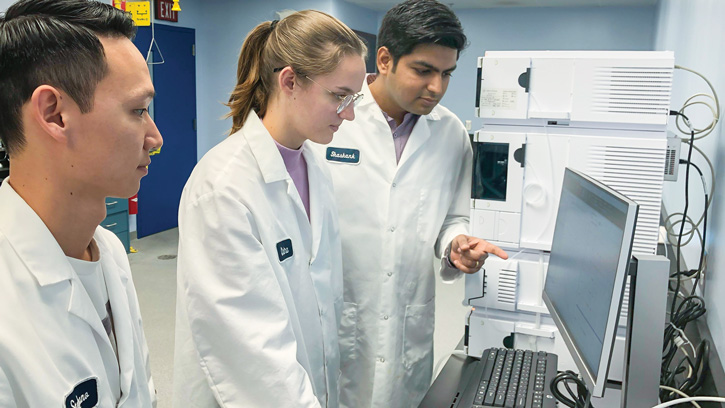Oats: Beyond Beta-Glucan
Health | RESEARCH
Oat milk may be a source of beneficial phenolic compounds called avenanthramides (AVNs), according to an analysis of seven oat milk brands conducted by a group of Steuben Foods scientists including Claire Noack, Hyun Sik Chu, and Shashank Gaur.
Oats are known best for their role in reducing heart disease risk factors (total plasma cholesterol and LDL cholesterol), and beta-glucan, the active component of oat soluble fiber, gets most of the research attention.
AVNs, the functional, low-molecular-weight phenolic compounds unique to oats among cultivated grains, are less well known (Pridal et al. 2018). Human and animal studies have shown that AVNs are bioavailable and exhibit antioxidant and anti-inflammatory effects (Sang and Chu 2017).
Oat milks represent a convenient and popular way to consume these compounds, but limited information is available on the AVN composition of commercially available oat milks. For that reason, the Steuben Foods scientists, in collaboration with a team led by Haibo Huang, an associate professor in the Virginia Tech University Department of Food Science & Technology, decided to analyze the AVN content of oat milk.
The Research Process
After chemical extraction, the researchers used high-performance liquid chromatography to identify and quantify the concentration of AVNs A, B, and C, the three most prevalent AVN analogs. All oat milks tested contained varying levels of AVNs. The average total AVN concentration was 51.86 ±14.4 µg/g on a dry weight basis, which equates to 487.7 µg to 2,232.1 µg per 8 fl oz serving.
The study suggests that oat milk provides similar total AVNs (about 1,226 µg per serving) to oatmeal (1,692 µg per serving), assuming a standard 0.5 cup serving size. An earlier study of many different oat-based products, including oat breakfast cereal, oat bread, and oat flour, found a wide variation in AVN content, with a strong relationship between the amount of oat-based ingredients and the level of AVNs (Pridal et al. 2018). While earlier clinical trials used doses considerably higher than the AVN content found in oat milks or other common oat products, oat milks may be conducive to increasing AVN intake for many consumers, the researchers maintain.
AVNs are known to be heat-labile and can be lost during commercial hydrothermal processing of oats (Bryngelsson et al. 2002). However, the Steuben Foods/Virginia Tech results show that the AVNs were relatively well preserved.
Additional research is warranted on different nutritional components of oats, and on their stability and bioavailability in beverages, according to the Steuben Foods researchers. “Considering the encouraging results of our study, along with oat milk’s rising popularity, AVNs should be included along with beta-glucan as a health benefit of consuming oats and oat milks,” says Gaur.


